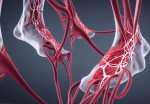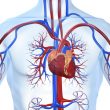Results of infrapopliteal territory revascularization in critical limb ischemia. Compared against the general population, patients suffering from critical lower limb ischemia (CLI) not only experience seriously limited quality of life, but also face a significant higher risk of death and amputation. Specifically, the optimal treatment for these patients remains uncertain. This uncertainty was sparked by...
Deep Vein Arterialization: Have We Conquered “Non-Revascularizable” Critical Limb Ischemia?
Deep vein Arterialization in patients with critical “non-revascularizable” limb ischemia. We are familiar with the poor quality of life and elevated mortality of patients with chronic limb-threatening ischemia (CLTI). In its last stages (nearly terminal), revascularization (either surgical or endovascular) has been shown to reduce amputation incidence. However, similarly to heart disease and other vascular scenarios,...
Hybrid Coronary Revascularization: A Valid Option?
In this article, we will examine the use of hybrid coronary revascularization to treat multivessel coronary artery disease. Coronary artery disease (CAD) is the most common cause of morbidity and mortality in the western world. The presence of multivessel CAD is associated to high short and midterm mortality and coronary artery bypass graft (CABG) is...
BEST-CLI: Revascularization of Critical Lower Limb Ischemia, a Pragmatic Study
Critical lower limb ischemia (CLLI) is associated with a major deterioration in quality of life and a significant increase in morbidity and mortality. Its estimated annual incidence is 220 to 3500 cases per million people, with an expected prevalence of 11% of patients with peripheral arterial disease. CLLI is the “terminal” stage of peripheral artery...
Discrepancy between Angina and Ischemia Repeats in Peripheral Artery Disease
Three randomized studies showed exercising significantly improves 6-minute walk outcomes in patients with peripheral artery disease (PAD). However, many participants randomized to exercise did not perceive changes, and sometimes even got worse. These findings suggest a significant discrepancy between objective and perceived change in walking ability among PAD patients. 400 patients with peripheral artery disease...
Which Type 2 Endoleaks Should We Intervene?
This work emphasizes the need to be conservative with type 2 endoleaks, and the need for long-term prospective information to learn about the advantages of intervention. The presence of type 2 endoleaks is associated with reintervention, as it was historically assumed that they increase the risk of sac rupture. However, this new research, published in...
A Headache for Cardiologists: Ischemia with Non-Obstructive Disease
Treating patients with functional stress test induced ischemia and non-obstructive coronary artery disease (INOCA) is complex and often frustrating. The multifactorial nature of this disease in addition to the complex physiopathological relationship between angina and ischemia turn these patients into a real headache for cardiologists. The CIAO-ISCHEMIA was recently published in Circulation and was designed...
The Ten Commandments in Adult Congenital Heart Disease
Adult congenital heart disease is a life-long condition that requires appropriate follow-up by experts. Said follow-up is paramount to diagnosing specific and highly variable complications in a timely manner. The recently published European Society of Cardiology guidelines for the management of congenital heart disease calls for a summary of its most important aspects as “ten...
Drug-Coated Balloons in Critical Ischemia: The Paradigm of Randomized Evidence vs. Logbooks
This research, which included thousands of patients treated for chronic inferior limb ischemia with drug-coated balloons, did not show an association between said devices and the increased mortality observed in some randomized trials. The long-term evidence from plenty of real-world patients contradicts what has been shown in randomized trials, leaving an information gap. Endovascular revascularization...
Virtual ACC 2020 | Relationship between Ischemia Severity and CAD
The ISCHEMIA trial enables countless sub-studies. Many of them have made part of the virtual ACC 2020, and among them you will find the present study. This analysis finds it is the anatomy — rather than ischemia — which predicts events. And even more interesting is the fact that revascularizing this particular anatomy will not...









